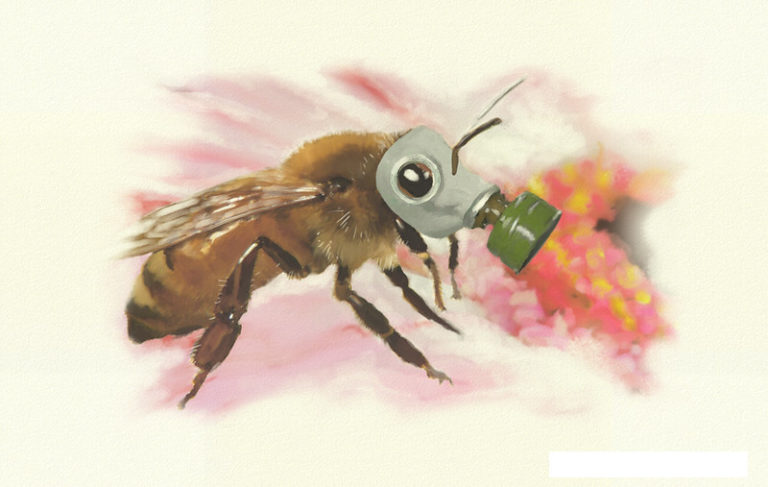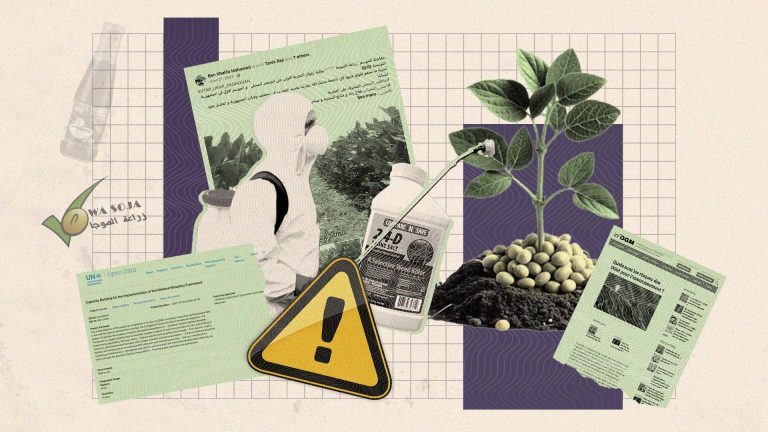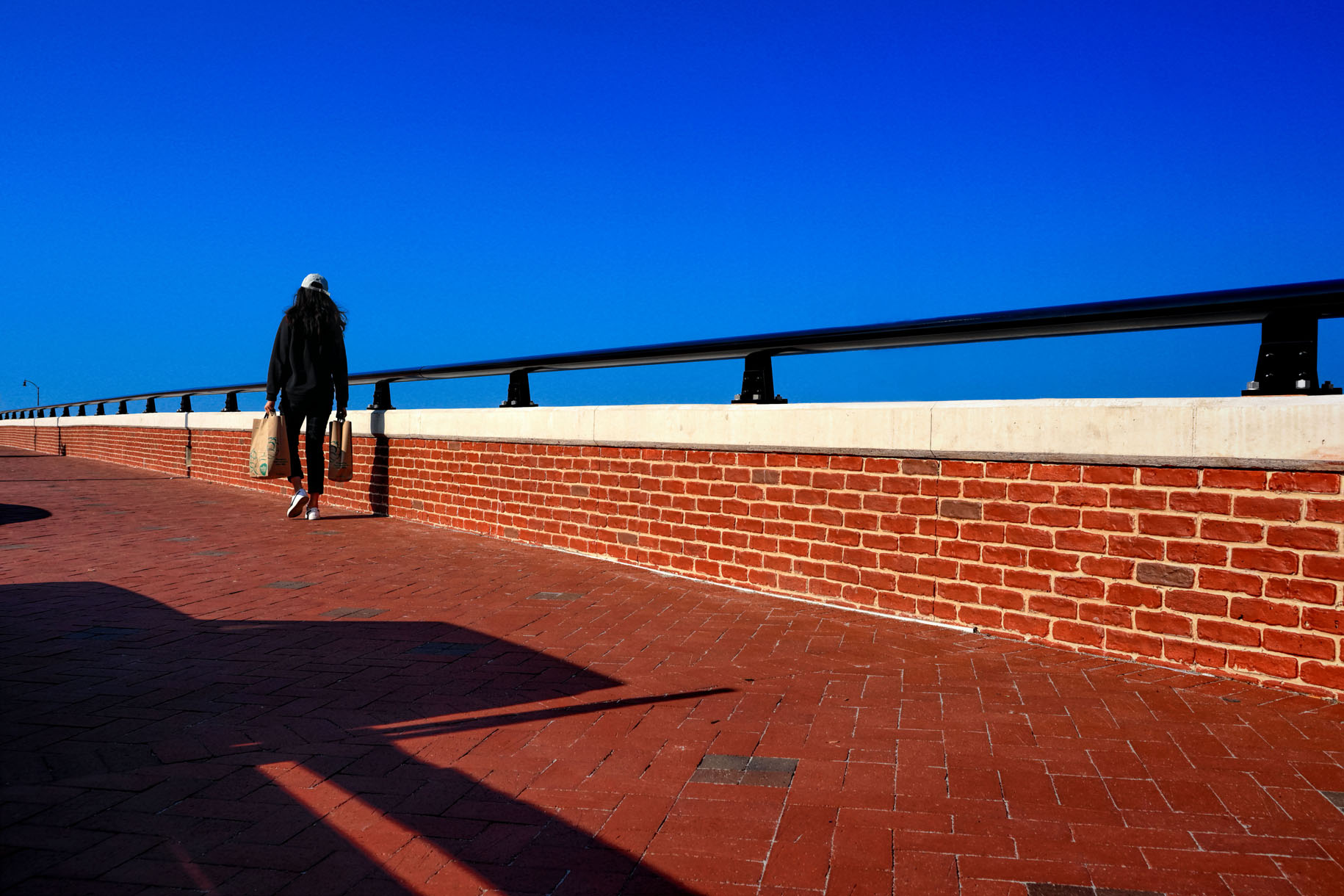News
25 years later, insecticidal GMOs face insect resistance
43 detections of insects having acquired resistance to the Bt proteins supposed to kill them were listed in a scientific article in 2023. 43 cases out of 73 studied, i.e. more than half. For the authors of the article, the use of insecticidal GMOs has been crowned with success, as in several cases it has made it possible to reduce or even eradicate local pests. But failures also occurred due to resistance. The authors believe that the future lies in a combination of technologies, among which is RNA interference.

The scientific article appeared in early 2023 in the Journal of Economic Entomologyi. Its authors, three researchers from the University of Arizona, reviewed 25 years of cultivation of plants genetically modified to produce insecticidal proteins. The question posed is whether or not resistance to these insecticidal proteins has actually developed in insect populations exposed to them. This is a crucial question, as it concerns the effectiveness of these GMOs or, on the contrary, their contribution to increasing the problem they were intended to solve.
Some “successes” noted or not reported?
On the basis of the information analyzed by the researchers, several cases of insect pests that have been contained, or even eradicated, thanks to the cultivation of Bt transgenic plants are reported. They detail cases of P. Gossypiella in the USA, where commercialized Bt cotton crops have, they claim, “facilitated eradication of this invasive pest from the cotton-growing regions of the U.S. and northern Mexico”. They also mention the less certain case of Bt cotton, which “is probably also the key factor that dramatically reduced (C. virescens) density in the U.S. and Mexico”. With regard to the European corn borer, the authors also mention a reduction in insect density to “historically low levels in several midwestern states including Wisconsin”. On another continent, they report that Bt cotton “remained effective” against H. armigera and H. punctigera insects in Australia, and H. armigera and P. gossypiella insects in China.
In Europe, where Mon810 insecticidal corn has been grown since the late 90s, the authors do not report any reduction in insect pest populations. They simply state that there is no data showing a decrease in the susceptibility of corn borer and sesamia to the Bt protein produced by Mon810 maize. This information is surprising considering that, in 2021, a case of damage to Mon810 maize crops by sesamia was reported. Apparently, no scientific article has been published on this case, but the European Food Safety Authority (EFSA) considers possible that this may be a case of appearance of resistance. They even deplore the fact that Bayer has not collected enough solid data to answer this questionii.
As the authors of the article have based their work on a scientific bibliography, an important limitation is that cases which have not been documented by researchers will escape their review. In the case of the European Union, they based their review on a scientific article published shortly before theirs, also in early 2023iii. This article does not mention the case in Spain, the one worrying European experts, not even to say it exists. This potential case of resistance is therefore not in the US authors’ review, nor even in their “early warning” table.
Resistance failures
Out of a total of 73 cases studied, the researchers list no fewer than 26 cases of resistance acquired by insects to a Cry transgenic protein produced by a GMO plant. These cases occurred a few years after the development of areas cultivated with insecticidal GMOs (see graph). Among the most problematic cases, P. gossypiella in India and D. v. virgifera in the United States of America are two insects that have become resistant “to all Bt toxins produced by currently available Bt crops targeting each pest”. For H. Zea in the USA, only one transgenic protein remains effective to date, the Vip3Aa protein.

This graph was produced by Inf’OGM by ‘simply’ superimposing two graphs from the scientific article.
Of the 26 reported detections of resistance cases, 18 concern insecticidal GM maize in South Africa, Canada, Argentina, Brazil and, above all, in the United States where 10 of the 18 cases are reported. The other insecticidal GMO Bt plants are cotton and soybean, in the same countries as for maize, plus India and Pakistan. To these 26 cases, the authors add 17 for which “early warnings of resistance” were observed. In other words, insects targeted by insecticidal transgenic proteins are less and less sensitive to these proteins. If nothing is done to restore this susceptibility within the target insect population, these cases will become cases of acquired resistance. These 17 cases are found on sugarcane, maize and cotton, all of which are transgenic. The countries concerned are the same as for the confirmed cases, with the addition of China and the Philippines.
No questioning of the approach adopted
Although the number of cases of acquired or incipient resistance (43, see table) is higher than the number of cases where insects continue to be completely killed by the transgenic protein (30), the authors remain confident in a type of agriculture where one technology complements or replaces another that begins to fail. They thus consider that the next steps will not involve new transgenic proteins, but rather a combination of “Bt toxins with RNA interference”. Interferent RNA are molecules that disrupt the production of a particular molecule. Although they are increasingly promoted directly and indirectly by multinationals, they are not a panacea, as the researchers themselves point out. For them, the characteristics obtained by RNAi technology “are generally not as potent as Bt toxins and are vulnerable to evolution of broad-spectrum pest resistance to RNAi”. They also report on the possible use of non-Bt soil bacteria that show some “promise against Bt-resistant D. v. vivgifera”. Far from questioning, or even calling into question, the approach adopted, these cases of the appearance of insect resistance to insecticide GMOs once again serve the technological headlong rush being pursued in agriculture. It’s a story with no end in sight.
Table : The 43 insects resistant orstarting to resist, the country and the GM plant involved
(in blue, the cases for which early warnings of resistance exist)
| Country | Number | GM Plants | Insects | Country | Number | GM Plants | Insects |
|---|---|---|---|---|---|---|---|
| USA | 16 | Maize | D. barberi | Argentina | 6 | Maize | D. saccharalis |
| USA | Maize | D. barberi | Argentina | Maize | P. gossypiella | ||
| USA | Maize | D. v. virgifera | Argentina | Maize | S. frugiperda | ||
| USA | Maize | D. v. virgifera | Argentina | Maize | S. frugiperda | ||
| USA | Maize | D. v. virgifera | Argentina | Maize | S. frugiperda | ||
| USA | Maize | D. v. virgifera | Argentina | Maize | S. frugiperda | ||
| USA | Maize | H. zea | Canada | 4 | Maize | O. nubilalis | |
| USA | Maize | H. zea | Canada | Maize | S. albicosta | ||
| USA | Cotton | H. zea | Canada | Maize | O. nubilalis | ||
| USA | Cotton | H. zea | Canada | Maize | O. nubilalis | ||
| USA | Cotton & Maize | H. zea | Pakistan | 4 | Cotton | P. gossypiella | |
| USA | Maize | S. frugiperda | Pakistan | Cotton | E. vittella | ||
| USA | Maize | S. albicosta | Pakistan | Cotton | H. armigera | ||
| USA | Maize | D. saccharalis | Pakistan | Cotton | S. exigua | ||
| USA | Maize & cotton | H. zea | India | 3 | Cotton | P. gossypiella | |
| USA | Maize | S. frugiperda | India | Cotton | P. gossypiella | ||
| Brazil | 7 | Soya | C. aporema | India | Cotton | H. armigera | |
| Brazil | Soya | R. nu | South Africa | 1 | Maize | B. fusca | |
| Brazil | Maize | S. frugiperda | China | 1 | Cotton | H. armigera | |
| Brazil | Maize | S. frugiperda | Philippines | 1 | Maize | O. furnacalis | |
| Brazil | Sugracane | D. saccharalis | |||||
| Brazil | Sugracane | D. saccharalis | |||||
| Brazil | Maize | S. frugiperda |
i Bruce E Tabashnik et al., « Global Patterns of Insect Resistance to Transgenic Bt Crops: The First 25 Years », Journal of Economic Entomology, Volume 116, Issue 2, Pages 297–309, Avril 2023.
ii Eric Meunier, « In Spain, are some insects beginning to resist GM maize? », Inf’OGM, 16 october 2024.
iii García, M., C. García-Benítez, F. Ortego, and G. P. Farinós, « Monitoring insect resistance to Bt maize in the European Union: update, challenges and future prospects », Journal of Economic Entomology, Volume 116, Issue 2, Pages 275–288, Avril 2023.











